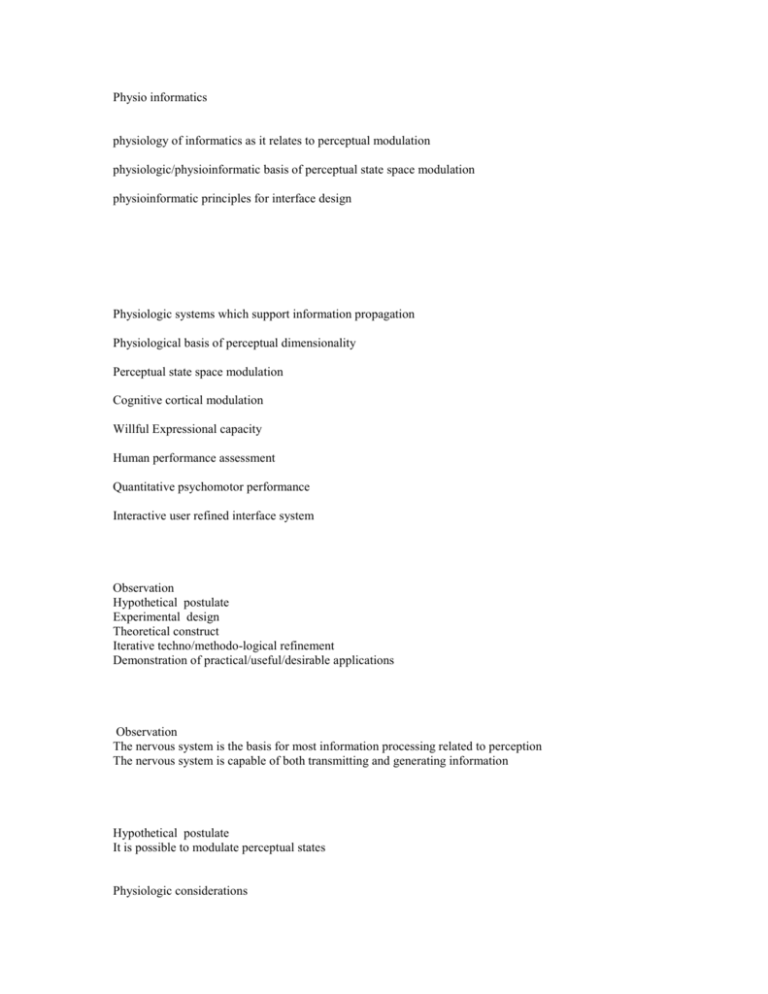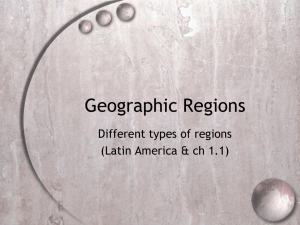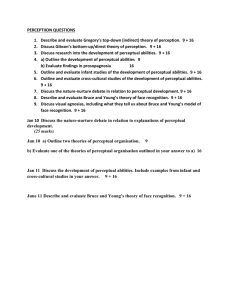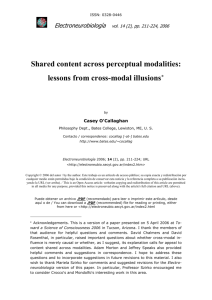Physio informatics
advertisement

Physio informatics physiology of informatics as it relates to perceptual modulation physiologic/physioinformatic basis of perceptual state space modulation physioinformatic principles for interface design Physiologic systems which support information propagation Physiological basis of perceptual dimensionality Perceptual state space modulation Cognitive cortical modulation Willful Expressional capacity Human performance assessment Quantitative psychomotor performance Interactive user refined interface system Observation Hypothetical postulate Experimental design Theoretical construct Iterative techno/methodo-logical refinement Demonstration of practical/useful/desirable applications Observation The nervous system is the basis for most information processing related to perception The nervous system is capable of both transmitting and generating information Hypothetical postulate It is possible to modulate perceptual states Physiologic considerations Sensory physiology Neuro physiology Brain systems Perceptual considerations Topo chromo sonics XYZ HVC PTI Experimental design Establish a technological system which can measure the required parameters to validate or refute hypothesis.. With a basis of experience in Electro physiology Neuro diagnostics Advanced interface technology Theoretical construct Develop a model which most generalizes the phenomenological aspects Notational system which exploits interdisciplinary interaction A languaging system which can classify emerging observations Iterative techno/methodo-logical refinement Develop an experimental environment which promotes reality based experimental conditions in which a good balance of theoretical and practical ideas and methods can be refined EEG and chaos Instrumented glove and hand function Spatial temporal isosurfaces Pressure sensors for gait, grip and seating Bioelectric interface for vr and video games and rc car Demonstration of practical/useful/desirable applications Real world applications -stint science proof of concept technology demonstration range of applications focus on main application develop an academic lab demonstrate development of operational professionals utilizing basic science Research, Development, Test Evaluation prototyping and demonstration of advanced technologies. the integration of a set of advanced human-to-computer input devices into a single interface system data fusion to enable meaningful correlations across various input modalities BACKGROUND research, prototyping, development technologies to support interpretation of data is a major challenge. For any complex phenomenon, large number of relevant input systems and techniques creates an interface problem with exponential proportions. representation and interpretation of multiple, diverse data sources, human interpretation of these data sources. systems, architecture, design engineering research, prototype, demonstrate capabilities in the following areas: the integration and fusion of information from multiple human-to-computer input devices countermeasures; innovative mechanisms to support interactive environments; experimental protocols. rendering techniques that provide insight into the various phases of the problem INTEGRATION AND FUSION research, prototype, and demonstrate integration of a set of advanced human-to-computer input devices into a single interface system. This integration of data input devices into a single system devices such as, EEG, EMG, EOG, (bioelectric signals from brain, muscle and eye), dynamic bend sensors, pressure sensors, audio video digitizers, other devices. data fusion enable meaningful correlations across various input modalities. INTERFACING integration of comprehensive sets of rendering methods visual, aural, tactile, proprioceptive, somatosensory integrating multiple rendering devices into a prototype system an integrative experiential interaction with the complex data types. advanced interfacing technology rendering of computer information onto multiple human sensory systems achieve a sustained perceptual effect (i.e., a sensation with a context). combination of these different rendering modalities somatotopic placement, spatial coding of the rendered information implementation of vision, hearing, and touch technologies captializing on simultaneous sensation multiple independent and dynamic data sets integrated physiologically into a perceptual state. INTERACTIVE ENVIRONMENTS demonstrate interactive environments combine components of advanced human-to-computer input devices, in new ways to render complex information render content specific information onto multiple human sensory systems sustained perceptual effect, monitoring human response anticipatory user tracking physiometric gestures, speech, eye movements other inputs, providing for the measurement and tracking of directed search and discover interactions DATA RENDERING ANALYSIS demonstrate enhancements to the interface system match the human nervous system's ability to transduce, transmit, render to consciousness the necessary information to interact intelligently with information. data analysis subsystem designed to enhance the ways that relevant data may then be rendered optimally to the operators' sensory modalities, processing of multiple data sets in a variety of ways graphical analysis (phase portraits, compressed arrays,recurrence maps, etc.) sound editing (mixing, filtering). automated detection of trends correlations, user alerts indicating detection of areas worthy of further investigation EXPERIMENTAL PROTOCOLS experimental protocol evaluation of systems interaction with appropriate agencies specific requirements of mission critical objectives DEMONSTRATIONS demonstrations of the developing functionality, seminars and workshops for the purposes of disseminating furthering this research. REPORTS, DATA DELIVERABLES. SPECIAL CONSIDERATIONS LIMITATIONS, CONSTRAINTS, CONDITIONS










